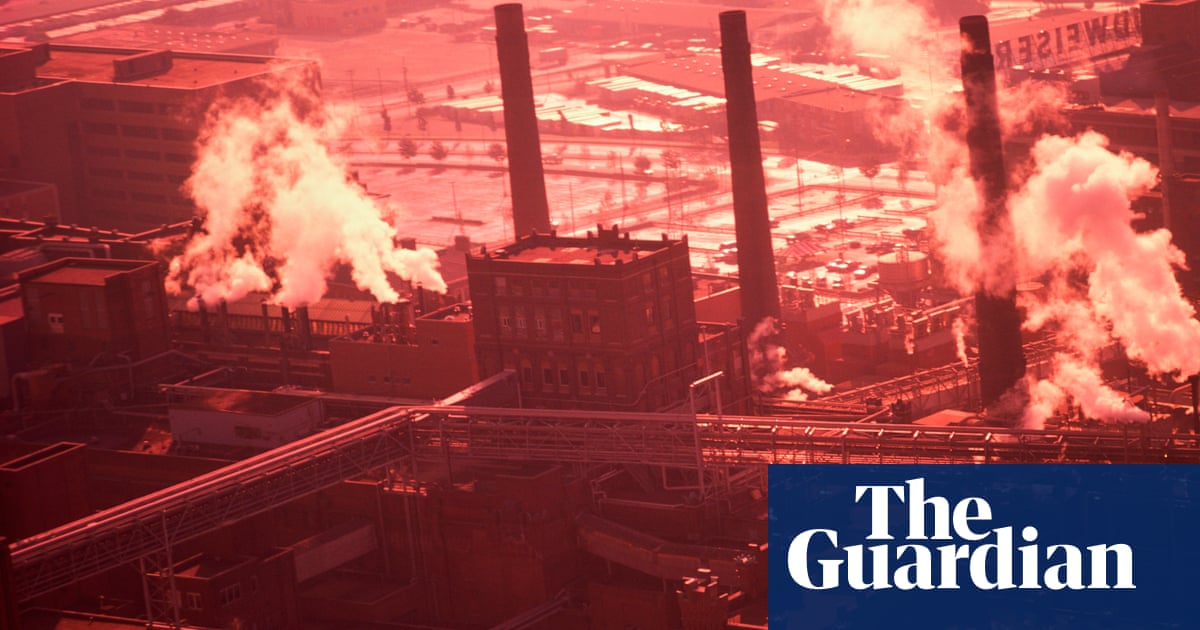‘Safe’ air-quality levels in US, UK and EU still harmful for health, study says
‘Safe’ air-quality levels in US, UK and EU still harmful for health, study says The Guardian


The Harmful Effects of Air Pollution on Public Health

Introduction
Two major new studies have revealed that even the smallest exposure to sooty air pollution from cars, trucks, and factories can cause widespread harm to people’s hearts and lungs. Government regulations often allow for dangerous risks to public health, highlighting the need for action to address this issue.
The Impact of PM2.5 on Heart and Lung Health
According to US researchers, there is no safe amount of PM2.5, a microscopic form of airborne pollution consisting of tiny soot particles. Even small amounts of PM2.5 can increase the risk of cardiovascular disease and other serious health problems.
Study 1: Increased Risk of Hospitalization
In one study, which analyzed data from 60 million people aged 65 and older in the US from 2000 to 2016, it was found that exposure to average levels of PM2.5 increased the risk of hospitalization for seven major types of cardiovascular disease.
Study 2: WHO Guidelines Not Safe
The second study revealed that even when short-term PM2.5 exposure was below the World Health Organization (WHO) limit, there was a significant increase in hospital visits for cardiovascular and respiratory diseases. This highlights the inadequacy of current guidelines in protecting public health.
Impact on All Age Groups
The harmful effects of air pollution are not limited to specific age groups. People of all ages, from children to the elderly, are at risk of developing health problems such as chronic obstructive pulmonary disease and asthma.
Sources of PM2.5
PM2.5 particles are primarily emitted through the combustion of fossil fuels used by vehicles, power plants, and industrial processes. They can also be released during wildfires, which are becoming more severe due to the climate crisis. When inhaled, these particles can cause a range of health issues.
The Urgent Need for Action
Air pollution caused by fossil fuels is responsible for approximately 5 million deaths worldwide each year. Air and water pollution combined account for one in six deaths globally. Despite this, government regulations have not kept pace with the severity of the issue.
Current Regulations and Recommendations
The US Environmental Protection Agency (EPA) recently strengthened the national air quality standard for PM2.5, but it still exceeds the WHO limit. The UK and European Union also have higher thresholds than the WHO guidance, emphasizing the need for stricter measures to combat air pollution.
The Way Forward
It is crucial to prioritize both economic growth and public health. Significant progress has been made in reducing PM2.5 levels, resulting in substantial health benefits. Stricter regulations and a comprehensive approach are necessary to ensure cleaner air and better health outcomes for all.
SDGs, Targets, and Indicators
-
SDG 3: Good Health and Well-being
- Target 3.9: By 2030, substantially reduce the number of deaths and illnesses from hazardous chemicals and air, water, and soil pollution and contamination.
- Indicator: Hospitalization rates for cardiovascular and respiratory diseases caused by air pollution.
-
SDG 11: Sustainable Cities and Communities
- Target 11.6: By 2030, reduce the adverse per capita environmental impact of cities, including by paying special attention to air quality and municipal and other waste management.
- Indicator: Levels of PM2.5 air pollution in cities.
-
SDG 13: Climate Action
- Target 13.1: Strengthen resilience and adaptive capacity to climate-related hazards and natural disasters in all countries.
- Indicator: Increase in the frequency and intensity of wildfires due to climate change.
Analysis
The article highlights the harmful effects of air pollution, specifically PM2.5 particles, on people’s health. Based on this information, we can identify the following SDGs, targets, and indicators:
1. SDG 3: Good Health and Well-being
This SDG is directly connected to the issues discussed in the article because it focuses on promoting good health and well-being for all. The harmful effects of air pollution on cardiovascular and respiratory health align with the goal of reducing deaths and illnesses caused by pollution.
- Target 3.9: By 2030, substantially reduce the number of deaths and illnesses from hazardous chemicals and air, water, and soil pollution and contamination.
- Indicator: Hospitalization rates for cardiovascular and respiratory diseases caused by air pollution.
The article mentions that exposure to PM2.5 particles increases the risk of hospitalization for cardiovascular diseases. This aligns with Target 3.9, which aims to reduce deaths and illnesses from air pollution. The indicator mentioned in the article is hospitalization rates for cardiovascular and respiratory diseases caused by air pollution, which can be used to measure progress towards this target.
2. SDG 11: Sustainable Cities and Communities
This SDG is relevant because it focuses on creating sustainable cities and communities, including improving air quality. The article highlights the need to pay special attention to air quality in cities to reduce the adverse environmental impact.
- Target 11.6: By 2030, reduce the adverse per capita environmental impact of cities, including by paying special attention to air quality and municipal and other waste management.
- Indicator: Levels of PM2.5 air pollution in cities.
The article mentions that PM2.5 particles are primarily emitted through the combustion of fossil fuels used by cars, trucks, power plants, and industrial processes. This contributes to air pollution in cities. Target 11.6 aims to reduce the adverse environmental impact of cities, including air quality. The indicator mentioned in the article is levels of PM2.5 air pollution in cities, which can be used to measure progress towards this target.
3. SDG 13: Climate Action
This SDG is connected to the article because it focuses on taking action to combat climate change and its impacts. The article mentions that wildfires, which contribute to PM2.5 pollution, are getting fiercer due to the climate crisis.
- Target 13.1: Strengthen resilience and adaptive capacity to climate-related hazards and natural disasters in all countries.
- Indicator: Increase in the frequency and intensity of wildfires due to climate change.
The article implies that the increase in the frequency and intensity of wildfires is a result of climate change. Target 13.1 aims to strengthen resilience and adaptive capacity to climate-related hazards, including wildfires. The indicator mentioned in the article is the increase in the frequency and intensity of wildfires due to climate change, which can be used to measure progress towards this target.
Table: SDGs, Targets, and Indicators
| SDGs | Targets | Indicators |
|---|---|---|
| SDG 3: Good Health and Well-being | Target 3.9: By 2030, substantially reduce the number of deaths and illnesses from hazardous chemicals and air, water, and soil pollution and contamination. | Hospitalization rates for cardiovascular and respiratory diseases caused by air pollution. |
| SDG 11: Sustainable Cities and Communities | Target 11.6: By 2030, reduce the adverse per capita environmental impact of cities, including by paying special attention to air quality and municipal and other waste management. | Levels of PM2.5 air pollution in cities. |
| SDG 13: Climate Action | Target 13.1: Strengthen resilience and adaptive capacity to climate-related hazards and natural disasters in all countries. | Increase in the frequency and intensity of wildfires due to climate change. |
Behold! This splendid article springs forth from the wellspring of knowledge, shaped by a wondrous proprietary AI technology that delved into a vast ocean of data, illuminating the path towards the Sustainable Development Goals. Remember that all rights are reserved by SDG Investors LLC, empowering us to champion progress together.
Source: theguardian.com

Join us, as fellow seekers of change, on a transformative journey at https://sdgtalks.ai/welcome, where you can become a member and actively contribute to shaping a brighter future.







